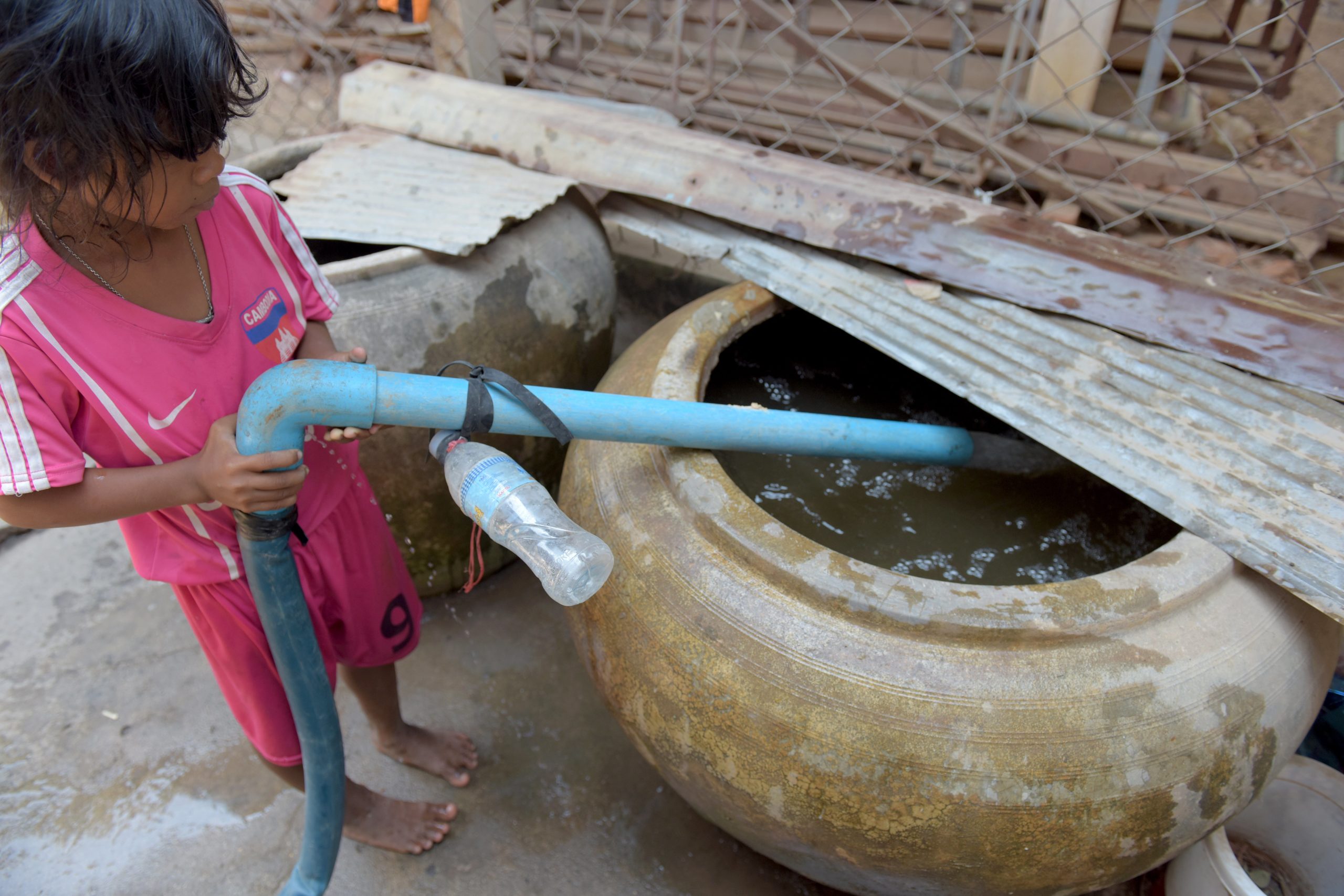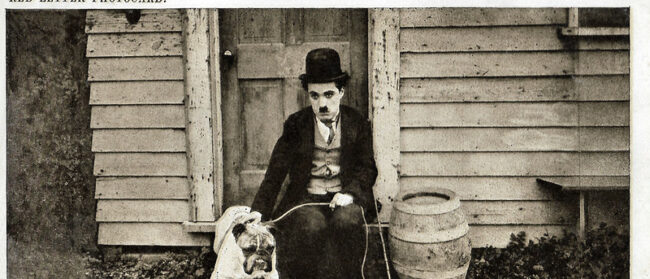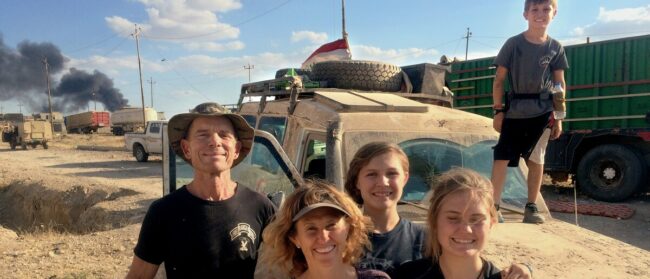This op-ed has been written by Future Forum, an independent Cambodia-based public policy think-tank. The views in this piece do not necessarily reflect those of Southeast Asia Globe.
Throughout this ongoing pandemic, the promotion of thorough hand washing has been at the forefront of the majority of Covid-19 awareness campaigns, policies, and coverage.
Among these has been the World Health Organization, who have emphasised the need to clean hands to prevent infection through “thorough” washing with soap and water, or the use of alcohol-based handrub where soap or water is unavailable.
But how to adhere to this advice when the world’s poorest, including in Cambodia, face water shortages generally, as well as an acute shortage of clean water?
“The 20-second hand wash, advised to kill the virus, would mean roughly 1.5-2 litres per wash; washing hands frequently would mean we need between 15-20 litres of water per person; a household of five would need 100 litres only for handwashing,” Indian environmentalist, political activist and the Director at Centre for Science and Environment Dr. Sunita Naraian wrote in March.
Cambodia’s Covid-19 outbreak seems to be under control for the time being. As of April 16, 122 have tested positive for Coronavirus, and 96 patients have recovered. Such a result is a welcome jolt of positive news.
However, if the drought that plagued the Kingdom across 2019 is to continue throughout 2020, then the pressing concern of water security is only magnified by the need for communities to protect against a disease that currently has no vaccine, and for which water is the front line of defence.
Amidst any potential outbreak, a lack of access to clean water, water pollution, water shortages, and poor water infrastructure exacerbate the situation, threatening the survival of the people.
The implications of water shortages have failed to receive the recognition they deserve in recent years. But this health crisis is a stark reminder that the Cambodian government has not sufficiently addressed the issue of insufficient access to clean water and sanitation, water scarcity and inadequate water infrastructure development over the decades.
Covid-19 should give us a sense of urgency and set off alarm bells for both the government and people about how vulnerable the country, and especially poor citizens, are on this issue.
There are efforts from the government, as well as non-governmental organisations, in Cambodia to raise awareness regarding how to combat the virus.
For example, the United Nations Children’s Fund (Unicef), funded by the United States Agency for International Development (Usaid), has given support to local authorities in disseminating information about preventive measures for the spread of Covid-19. This is done through loudspeakers announcements and poster sharing in provinces such Pursat, Stung Treng, and Kratie.
Among the most prominent campaigns run throughout the provinces is to promote clean hands, washed thoroughly with water. But there is little that citizens in the provinces can do when there is water shortages, a lack of clean water and sanitation, and where many cannot afford hand sanitiser.
This renders practicing this sort of personal hygiene, which is the main preventive measure, unavailable to most.
While it is reported that 77% of Cambodian rural population has poor access to safe water and sanitation, an equally grim picture is that densely populated urban areas will suffer shortages too. That’s according to Sim Sitha, director-general of Phnom Penh Water Supply Authority – the municipal water utility serving the capital and surrounding areas.
The authority estimates that many districts in Phnom Penh, as well as Kamboul and Posenchey districts 20km from the capital, and districts in Kandal province, are likely to suffer clean water shortages for another three years.
In the absence of safe water, medical facilities like clinics and hospitals cannot safely and effectively be used because it is essential that health professionals, including doctors and nurses, can wash their hands to control the virus’ spread.
As such, the urban poor and rural poor, without access to clean water and with weak healthcare facilities, are vulnerable to the viruses, making the response in these areas much more challenging.
On October 15, 2019, Prime Minister Hun Sen, during the 3rd Budapest Water Summit in Hungary, underlined that in the context of climate change, “low access to clean water and sanitation, limited awareness and insufficient public investment in water … might lead to a crisis in the future”.
According to the National Strategy for Rural Water Supply, Sanitation and Hygiene 2011-2025, the Cambodian government is committed to providing clean water to all rural populations by 2025.
But the reality today remains that people need to trudge to a cistern to collect unsafe water from streams and ponds – water that might cause more diseases rather than ward off the transmission of viruses. Many communities in Cambodia are also unaccustomed to the practice of boiling water to rid it of pathogens.
Even bottled water isn’t guaranteed to be of high quality.
A 2018 study by Unicef revealed that local bottled water, a common source of household drinking water in Cambodia’s northeastern provinces, “is also susceptible to contamination as almost 50% had a high concentration of coliform contamination”. Coliform contamination could undermine people’s health and cognitive development.

Wells are often the go-to solution for water scarcity in poor communities, and as of 2017 Cambodia had more than 630,000, with people spending between $1000 and $2000 to dig a working one.
But this reliance on finite groundwater reserves is not a long-term solution because once used up, they are gone. People are drilling for more wells, forgetting that pretty soon groundwater could be dried up too. Moreover, the untreated water from agricultural wells could carry toxins and germs.
Water pollution, caused by the runoffs from residential areas, industries, agriculture and other kinds of development, adds to this calamity by contaminating groundwater.
It remains unclear the true extent to which industries, agriculture and other development contributes to water pollution in Cambodia, but in December 2019, villagers in Cambodia’s Kratie and Mondulkiri provinces voiced concerns over the release of toxic waste from a gold mine company into the rivers.
In many parts of the world, agricultural waste, particularly pesticides, has contaminated the surface water. And although the Cambodian government banned pesticide imports in 2018, an illegal trade is still carried out.
It is unfortunately no surprise that in addition to contamination, Cambodia is also reeling under water shortages.
But many still hold the misconception that as it has the Mekong River, Tonle Sap, and Chaktomuk River, it will never run out of water. But the rural population is already in disarray, as many provinces in Cambodia are subject to extensive water shortages at certain times of the year.
The seeds of crisis can be found in 2016. As water ran low, crippling water shortage plagued 18 out of 25 provinces and subjected 2.5 million people to a lack of access to water. And in 2019, a tributary of Tonle Sap in Kampong Thom province dried out due to a record El Nino effect, with communities in 16 provinces also suffering water shortages.
This year too, Ministry of Water Resources and Meteorology spokesman Chan Youttha warned in January that “Takeo, Battambang, Svay Rieng, Kampot, Banteay Meanchey, Kampong Thom, Prey Veng and Koh Kong provinces are experiencing water shortages”.
Those living in central Phnom Penh are fortunate to have clean water, but still take it for granted because when they turn on the tap, there it is. Many who have it do not give it a lot of thought, treating it as if it’s worthless
The existing supplies of water are in decline due to the myriad contributing factors, such as high demand and below-average precipitation patterns. With longer dry spells stretching out, the thirsty ground swallows water fast, worsening local hardships.
Even more troubling is the fact that Cambodia’s existing water infrastructure is inadequate to cope with extreme weather events.
Clearly the dominant strategy upon which the government employs is the construction of irrigation systems. But due to the Kingdom’s crumbling water infrastructure, many large scale irrigation schemes cannot operate in the dry season owing to water shortages and inadequate operation and maintenance systems, thereby rendering them unable to respond to local needs.
The resulting water stress will impinge on all aspects of society, potentially causing unrest and striking a nerve among the poor, who have become increasingly sensitive to water shortages in recent years.
The longstanding problem of water shortages is not something new, but it is magnified by the unfolding threat of Covid-19, rendering it a critical and immediate matter of public health.
Although the government has made some efforts to provide clean water for the people, trends like this – a lack of clean water and increasing water scarcity – could yet persist for decades to come. While acknowledging that water shortage is a hard-to-put-together puzzle, time is running out quickly and we need rapid progress in this area.
The scale of effort requires a series of measures, both public and private to maintain resilience at a community level. No one size fits all. To this end, the government should initiate innovative water alternatives to conserve water, and harvest rainwater.
For example, to remedy infrastructure shortcomings, the government can build a community water plan, taking into account the availability, suitability, affordability and the willingness to pay. This is perhaps a tough choice because low population density and level of income make the plan economically unprofitable. But, it is the question whether the government prioritises the economic or social issue.
Water, while essential, is often neglected despite being a core component of human need and a functioning society.
Those living in central Phnom Penh are fortunate to have clean water, but still take it for granted because when they turn on the tap, there it is. Many who have it do not give it a lot of thought, treating it as if it’s worthless.
But to most Cambodians, clean water remains a luxury, and we should not disregard the potent warning that this Covid-19 outbreak has provided us.
Horn Chanvoitey is a Junior Research Fellow at Future Forum, an independent Cambodia-based public policy think-tank. She holds a BA (hons) in International Relations from Royal University of Phnom Penh. Voitey is also a co-author of a research study on Sino Cambodian relations winning the second place in the 2018 Annual Research Competition, organised by Institute of Foreign Languages, Royal University of Phnom Penh and Cambodia Development Institute.


